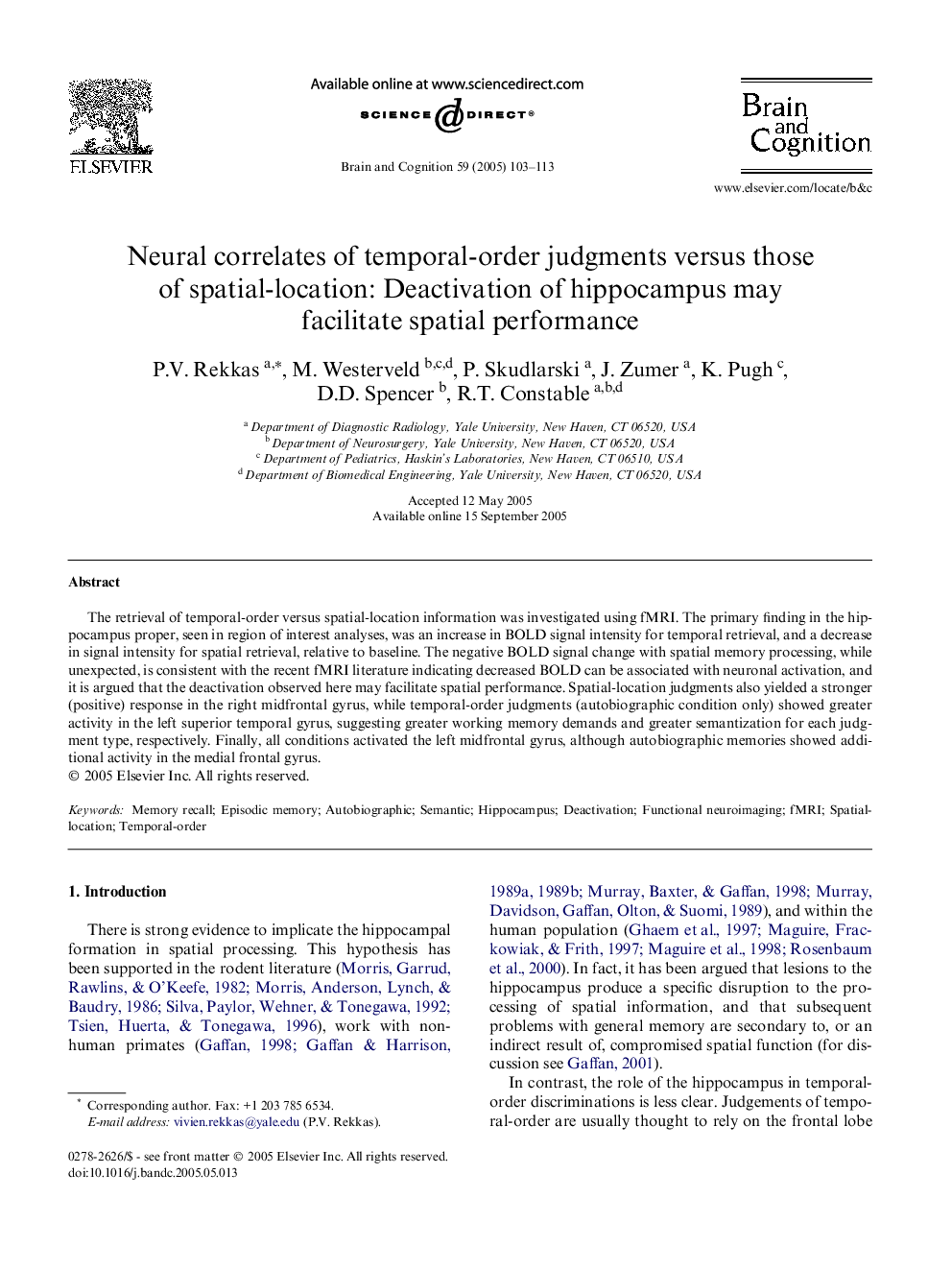| Article ID | Journal | Published Year | Pages | File Type |
|---|---|---|---|---|
| 10455625 | Brain and Cognition | 2005 | 11 Pages |
Abstract
The retrieval of temporal-order versus spatial-location information was investigated using fMRI. The primary finding in the hippocampus proper, seen in region of interest analyses, was an increase in BOLD signal intensity for temporal retrieval, and a decrease in signal intensity for spatial retrieval, relative to baseline. The negative BOLD signal change with spatial memory processing, while unexpected, is consistent with the recent fMRI literature indicating decreased BOLD can be associated with neuronal activation, and it is argued that the deactivation observed here may facilitate spatial performance. Spatial-location judgments also yielded a stronger (positive) response in the right midfrontal gyrus, while temporal-order judgments (autobiographic condition only) showed greater activity in the left superior temporal gyrus, suggesting greater working memory demands and greater semantization for each judgment type, respectively. Finally, all conditions activated the left midfrontal gyrus, although autobiographic memories showed additional activity in the medial frontal gyrus.
Related Topics
Life Sciences
Neuroscience
Cognitive Neuroscience
Authors
P.V. Rekkas, M. Westerveld, P. Skudlarski, J. Zumer, K. Pugh, D.D. Spencer, R.T. Constable,
